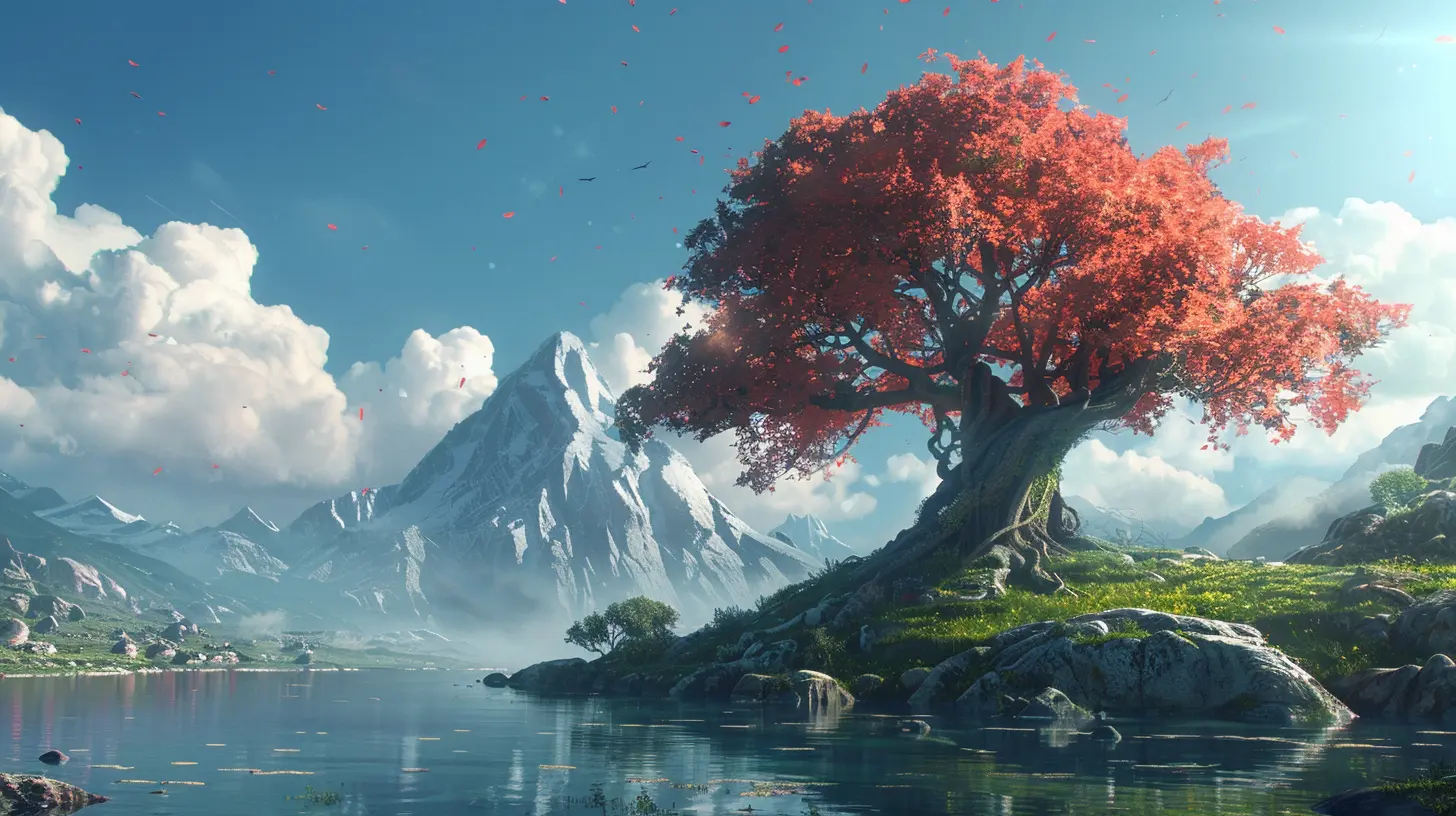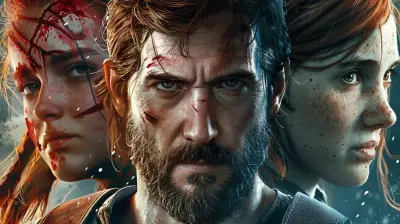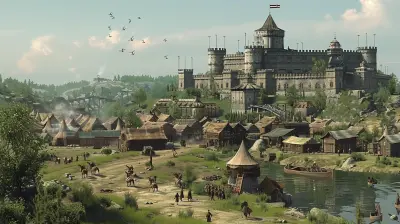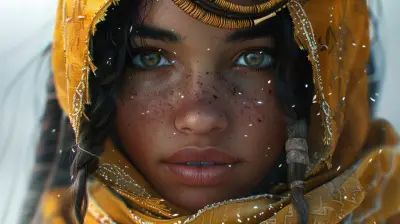Why Art Direction Matters More Than Raw Graphics Power
16 August 2025
Have you ever played a game that didn’t have the latest and greatest graphics, but still stuck with you for years? You know the ones—titles like Journey, Limbo, or The Legend of Zelda: Wind Waker. These games didn’t aim for photorealism or melt-your-GPU visuals, yet they carved a place in our hearts. Why? That’s the power of art direction.
Let’s be honest—raw graphical horsepower is cool. Seeing realistic rain droplets, ray tracing reflections, or ultra-HD textures is impressive. But it's not everything. In fact, great art direction often trumps raw power when it comes to crafting a memorable and meaningful gaming experience. So, let’s dive into why art direction matters more than raw graphics power—and why you should care.
What Is Art Direction in Video Games?
Before we go deep, it helps to get on the same page. So, what exactly is “art direction” in gaming?Art direction is the visual soul of a game. It’s not just how things look—it's how everything comes together to tell a story or evoke a feeling. Think of it as the creative vision behind the visuals. It includes:
- Color palettes
- Lighting and mood
- Environmental design
- Character style
- UI aesthetics
- Animation style
Meanwhile, raw graphics power is all about technical muscle—how many polygons you can push, the frame rate, how good the shadows look, how realistic the water behaves, etc. It’s tech, not vision.
The Problem With Chasing Realism
Let’s face it—many AAA studios get caught in the graphics arms race. With every new console generation, we’re promised "the most realistic game ever made." And while realism has its place, not every game benefits from it.Here’s the deal: Photorealistic graphics age quickly. The "cutting-edge" visuals from five years ago now look awkward. If you've ever gone back to play a PS3-era game that once wowed you, you know the feeling. What once felt jaw-dropping now feels... well, dated.
Now think about games like Okami or Cuphead. They’ve aged like fine wine thanks to their unique styles. These games didn't rely on pushing hardware—they leaned into a distinct artistic identity that never really gets old.
Art Direction Drives Emotional Impact
Good graphics can impress you. Great art direction? That can make you feel something.Let’s compare two games: one with high-fidelity visuals and another with standout art direction.
- Game A: Uses ultra-realistic character models and environments. Everything looks like it was pulled from a movie set.
- Game B: Uses a stylized art style. Maybe it’s cel-shaded, or maybe it has a watercolor look. But it’s consistent, expressive, and deliberate.
Now, if the story is meant to be emotional, which game's art do you think will better support that mood? Game B, right? Style enhances storytelling. It doesn’t just show you the story—it makes you feel it.
Games like Gris, Ori and the Blind Forest, or Inside are mood-driven experiences where every brushstroke, shadow, and color choice draws you into the world emotionally. That’s art direction doing the heavy lifting.
Creating a Unique Identity
The gaming landscape is crowded. Thousands of games compete for attention every year. So, how does one stand out?Spoiler: It's not by trying to look like every other hyper-realistic military shooter.
Art direction gives a game its personality. It’s how you recognize an image from Hollow Knight or Persona 5 in half a second. They pop. They're iconic.
Think of it like fashion. You could wear the most expensive fabrics, but without style or taste? You just look... expensive. Now take someone with killer style, even with limited resources—they turn heads. Same thing goes for games.
Helps Indie Games Shine
Indie developers rarely have the budget to compete with blockbuster graphics. But guess what? That’s rarely a problem.Indies like Hollow Knight, Undertale, Hyper Light Drifter, and Hades lean hard into stylized visuals rather than realism. And they’re better for it! These games build a visual universe that feels original and memorably unique.
Art direction becomes a superpower for indie devs. It lets them punch above their weight and deliver top-tier experiences without needing a big studio or cutting-edge tech.
Art Direction is Timeless
Let’s go old-school for a second. Ever fired up a game from the SNES or PS1 era and felt a wave of nostalgia wash over you?What’s interesting is, some of those low-res sprites and chunky polygons should feel outdated. But thanks to killer art direction, they don't. Games like Chrono Trigger, EarthBound, and Final Fantasy Tactics are still beautiful today.
Meanwhile, go back and play a “realistic” PS2-era sports game—you'll feel like you're watching mannequins with dead eyes move around awkwardly.
Art direction has staying power. Technology evolves. GPUs age. But style? That’s forever.
Telling a Cohesive Story
Ever played a game where the story is trying to be emotional, but the visuals are so jarringly inconsistent that you feel nothing?Great art direction keeps everything cohesive. The colors, designs, and animations work together to serve the tone and the story. It all fits like a perfectly tailored suit.
Take The Last of Us, for example. Yes, it has impressive graphics. But more importantly, it uses art direction—lighting, environmental storytelling, visual metaphors—to support the emotional weight of the narrative.
It’s not just what you see—it’s how it’s shown. And that can make or break your connection to the story.
Better Performance, Smoother Gameplay
Let’s get practical for a second.Chasing raw graphics often comes at a cost—namely, performance. Think frame drops, lag, overheating consoles. Nobody enjoys that.
Smart art direction gives developers more flexibility. A stylized game can look gorgeous without needing to run at 4K with ultra settings. That means better frame rates, quicker load times, and a smoother experience overall.
Ask any gamer: would you rather play a stunningly beautiful game at 30 FPS with stutters, or a visually creative game that runs smooth as butter? Exactly.
Standout Examples of Art Direction Done Right
Let’s shine a spotlight on a few games that prove our point.🎨 Journey
Minimalistic, breathtaking, and emotive—Journey proves that you don’t need high-res textures to move players emotionally.🌌 Hollow Knight
The hand-drawn gothic art style gives this indie Metroidvania immediate visual identity. Every frame could be a wallpaper.🖼️ Cuphead
A love letter to 1930s animation. It’s not just unique—it’s wholly unforgettable. Try imagining it with “realistic” graphics. It just wouldn’t work.🎮 The Legend of Zelda: Wind Waker
Initially criticized for its cel-shaded look, now considered a timeless masterpiece. Meanwhile, many “realistic” games from that era look dated.🧙 Persona 5
It's all about style. The menus, character models, and environments scream uniqueness. It’s like playing through an anime-meets-graffiti dream.Final Thoughts: It's Not About the Shiniest Graphics
At the end of the day, impressive graphics might get someone to click on a trailer—but it’s the art that makes the game linger in memory.Art direction is the glue that holds a game’s world together. It enhances gameplay, deepens emotions, and gives a title its identity. Raw power might wow you—but distinct, visionary art direction? That wins your heart.
So next time someone argues about which game looks “better,” maybe ask them this: "Will it still be beautiful 10 years from now?"
If you're a developer or even just a gamer with a love for the medium, remember—the best games aren't always the most realistic. They're the most authentic, artful, and alive.
all images in this post were generated using AI tools
Category:
Game GraphicsAuthor:

Pascal Jennings
Discussion
rate this article
1 comments
Uzi Simon
Art direction breathes life into games, transforming pixels into unforgettable experiences. It's not about sheer power; it's about creativity and vision. Let’s celebrate the artistry that captivates our hearts and fuels our passion for gaming!
August 26, 2025 at 2:14 PM

Pascal Jennings
Thank you! Absolutely, art direction is essential in creating immersive and memorable experiences that resonate with players beyond just visuals. It’s the creativity and vision that truly define a game’s impact.


